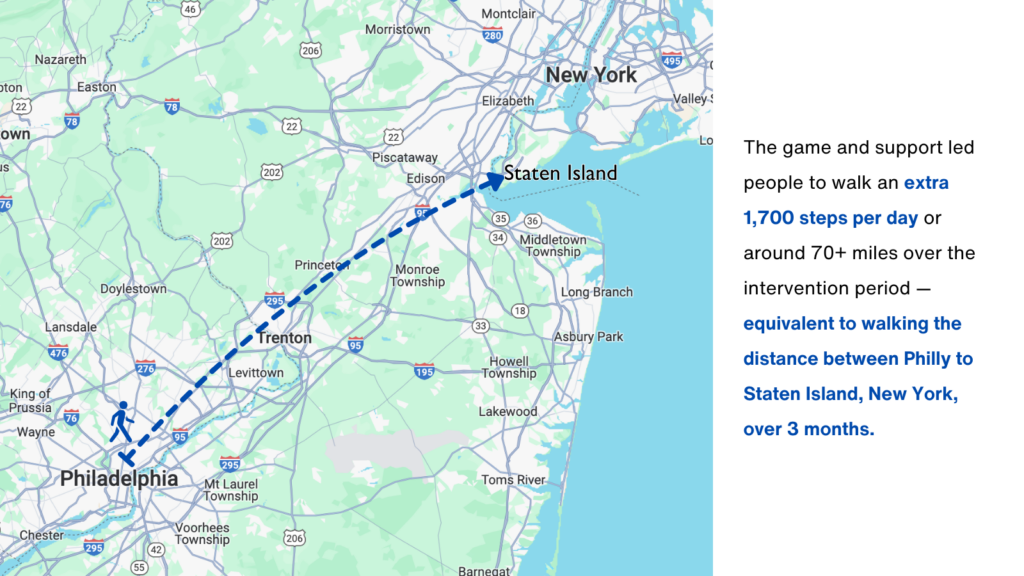Gamification and social support can increase steps for people at risk for Alzheimer’s

A new study conducted at the University of Pennsylvania called STEP 4Life found a way for people at risk for Alzheimer’s and related dementias to increase their steps — a significant finding considering that higher levels of regular physical activity are associated with reduced risk of cognitive decline and Alzheimer’s disease.
Main takeaway:
The researchers discovered that people at risk for Alzheimer’s disease who played a simple game with a support partner increased their walking and physical activity.

What the study looked at:
We know that people who move and exercise more have a lower risk of mental decline, but most people don’t do enough physical activity. The researchers wanted to test whether feedback, a game, and support from a partner could help people who are at risk for Alzheimer’s disease or related dementias move more.
What the research team thought might happen:
The researchers thought that people in the study who played a game and had support from a partner would have more physical activity during the 12-week period and that this would continue during the 3-week follow-up period.
They also thought that people who knew they were at higher genetic risk for developing Alzheimer’s would have more physical activity than those who were not at higher risk.
What the results were:
The results of the study confirmed their first prediction but not the second.
First, people who played the game with a support partner had greater change in their daily step count than the control group by about 1,700 steps per day, and this trend continued for several weeks after the game was stopped (the difference was about 1,200 steps per day in that period).
Second, people who were at higher genetic risk (due to having the APOE4 genotype) were not more active than people who were at average risk (did not have APOE4 genotype).
The researchers also asked people to rate their perceived risk for developing Alzheimer’s on a 0-100 scale, regardless of their genetic risk. Interestingly, people who felt their risk was higher were more active than those who felt their risk was lower. What they learned from this is that a person’s perception of their risk for Alzheimer’s is more motivating that their knowledge of genetic risk factors.
How you can use this information:
Staying physically active is helpful to maximize one’s independence and stay healthy as one ages. Applying strategies to make exercise more fun by making it into a game or to make it more social by having a support partner can be helpful ways to stay active over time.
More info:
Find the published results here.